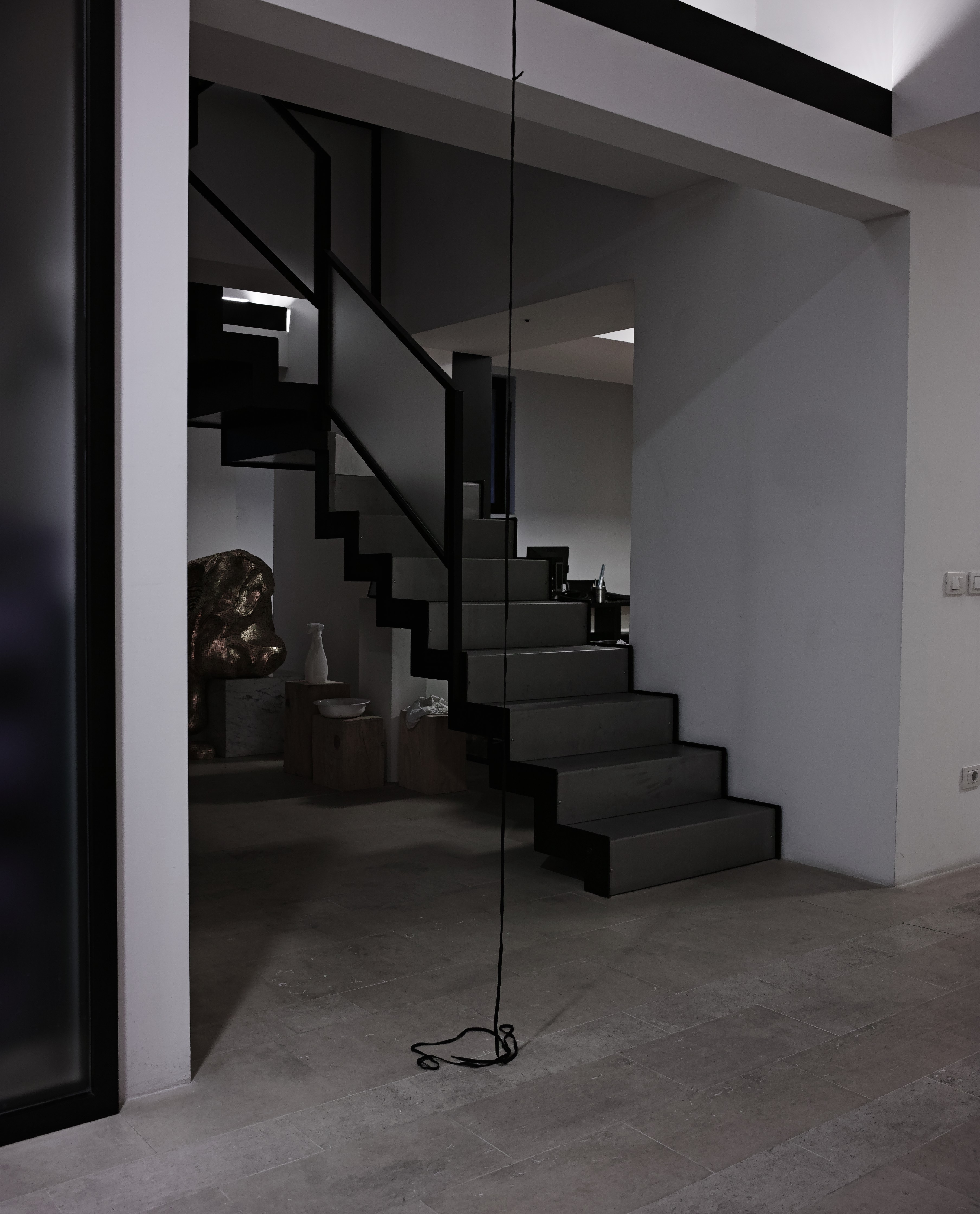Granular, 2019, audio synthesis, Bose speaker, player, room installation, office space (installation in the center, Luca Scarabelli )
LATO, Prato, Italy
w/Aurelio Andrighetto, Simona Barbera, Tiziano Campi, Umberto Cavenago, Ermanno Cristini, Hannes Egger, Ronny Faber Dahl, Pierluigi Fresia, Armida Gandini, Giancarlo Norese, Luca Scarabelli, Olivia Vighi
“Accesso Obliquo” nasce dall’incontro di due progetti, “Walkabout” e “A Place to Be” con un luogo, LATO, a Prato. Il collante è lo spazio, non quale contenitore ma in termini di identità; un tema questo che costituisce l’elemento portante del progetto “A Place to Be” e che in questa seconda tappa di “Walkabout” viene affrontato rincorrendo un’aporia, quella dell’esitare.
Date le caratteristiche fisiche dello spazio di LATO, qualificato dai volumi netti e dai tagli decisi dell’architettura, l’esitare appare come una sorta di contrappunto potenzialmente eleggibile a chiave di lettura del luogo. Una dimensione sospesa, fatta di discrezione, che corrisponde ad un guardare trattenuto in cui trovare la “verità” dello spazio.
Gli artisti partecipanti sono invitati a gesti minimi, per camminare in equilibrio nell’ambiguità di una “soglia in cui ci si trattiene”, fuoco di uno spazio della possibilità fatto di azione e resistenza.
Un “non esercizio” che non può non far pensare per esempio, trattandosi di spazio, a una soglia ormai eletta a metafora epistemologica, la porta di Rue Larrey. Qui il riferimento “dentro/fuori” è inversamente incrociato in una condizione di metastabilità, tale per cui ognuna delle due azioni –aprire/chiudere-, contestuali e simultanee, costituiscono reciprocamente l’affermazione e la resistenza all’altra.
“Eventi incompossibili” li definisce Vogl, o punti opachi del pensiero. Ritardi che si aprono al dubbio e entro il dubbio cercano la forma di un possibile “spiazzamento” significante.
Da un pensiero di Ermanno Cristini, Matteo Innocenti, Luca Scarabelli
_________________
